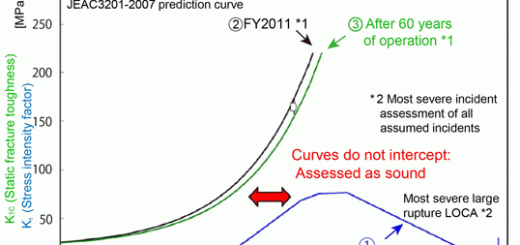Renewable Energy in Japan No.3: Biomass and Energy Conservation Nuke Info Tokyo No. 80
1.Biomass energy
1.1 What is Biomass? Biomass energy means energy that is produced from biomass. It is also called biofuel, as coal and oil are called fossil fuel. This type of energy includes for example wood gas obtained from woods* and methane from grains such as sugar cane. These energy sources are sometimes classified as wooden biomass and food biomass respectively. Fig. 1 shows various forms of energy obtained from biomass.
[*By burning wood with very little air, some flammable gas containing carbon monoxide and hydrogen can be obtained. It is easy to generate electricity by using wood gas to drive, for example, internal-combustion systems such as engines.]
1.2 Government’s commitment: When compared with other renewable energy sources, biomass energy hasn’t been recognized as a promising source of energy. Following the oil shock in 1973, the Forestry Agency did try to encourage the use of wood biomass by establishing model projects in 1983. However, the cost was high and after oil prices stabilized mainly by the lowering of kerosene prices, most projects were halted. Biomass is experiencing a comeback in recent year. One reason is that more and more people are concerned about the danger of nuclear power, wanting especially to be less dependent on nuclear power because of the JCO criticality accident. Another reason for the new interest is that Japan has to deal with issues of global warming. When biomass energy is utilized, it releases only the same amount of CO2 as it has absorbed. For this reason, it is considered not to have contributed to global warming. With respect to cost, if an environmental tax is introduced and fossil fuel is taxed at the appropriate rate, then some people believe that biomass can compete with other oil based sources.
According to the data provided at a March 2000 meeting of the Comprehensive Energy Review Committee’s New Energy Committee of the Agency of Natural Resources and Energy (ANRE), the oil equivalent of possible biomass supply in 1990 was 37 million tons (if thinned trees are included, the figure reaches 45 million tons). A micro study done in Miyagi Village in Gumma Prefecture (population 8,000 and village area 48km2) showed that the gas produced by the droppings of 60,000 pigs and 3,000 cows for milk production and 7,000 cows for meat production can easily exceed the village’s primary energy demand (including electricity). In spite of this promising aspect of biomass, due to its various forms as shown in fig 1, the definition of biomass has not been clearly established yet. Thus government subsidy programs and other measures have not been established so far.
1.3 Local initiatives: Some municipalities started introducing wood biomass programs around June of this year. Prefectures such as Kochi, Gumma, Iwate, Mie have organized committees to evaluate the possibilities of commercializing biomass. The purpose of the move is not only to replace oil and fight against global warming. It is also an attempt to become locally independent in the supply of energy. Most of these efforts are still in the planning stage. The prefectures are examining site possibilities and studying how best to design a collection system for wood to be used as fuel. They are also examining electricity and heat supply systems. In this way each region will locally find an appropriate energy system. (Tokyo is also involved in this move. About 38% of the land in the municipality of Tokyo is actually forest area!)
There are a number of projects currently under way. Yagi Bio-Ecology Center in Yagi-cho, Kyoto Prefecture, is using livestock droppings (650 cows and 1,500 pigs) and soy curd by-products (5 tons a day) to produce methane gas and generate electricity. The project is currently generating 140kW and co-generation* is also being done. Suntory, a famous beer manufacturer, has developed a gas co-generation system using methane from waste water produced during beer making procedures. The system produces 22% of the electricity and 35% of the heat used in the factory. In addition, it conserves 7% of energy and reduces CO2 by 7%. The technology will likely be adopted by other manufacturers in the near future.
[*Production of two useful forms of energy such as high-temperature heat or steam and electricity from the same fuel source.]
2. Energy Conservation
2.1 Energy conservation – A familiar concept for Japanese people: Japan has become a huge energy consumption nation. However, Japanese people have been very energy conservation minded for a long time. For instance, in the Edo era (1603-1867) clothes were recycled (see fig. 2) and there was even a kind of business that collected small bits of used candles for reuse. People used to live without harming their environment. But now we are trying to satisfy our desires without considering environmental consequences. Our way of life has been based on producing excessive waste and consequently harming the ecosystem.
2.2 Attempts by Governments: MITI (Ministry of International Trade and Industry) revealed in March of this year that it will drastically strengthen energy conservation measures. There are three reasons for this. In the first place, the government is finally in some aspects admitting the impossibility of the plan to construct additional 20 nuclear plants by the year 2010. Meeting future energy demand has become uncertain. Second, even though Japan proposed at COP3 in 1997 to reduce energy consumption by oil equivalent of 56 million kl per year by 2010, it is now considered difficult to achieve such a goal. This figure is more than the amount of energy conserved during the period of the two oil shocks. It will not be easy to accomplish. Finally, energy demand is actually increasing for home usage in the household sector and for travelling in the transportation sector. These figures suggest that more and more people are pursuing comfortable and luxurious life styles.
One of the programs MITI is planning to implement, is a plan to set up a 24 hour monitoring system for the amount of energy used in the home and office. This will enable people to easily find out how much energy they are using (see fig 3). MITI also plans to promote Energy Service Companies (ESCOs) that conduct energy conservation as business. Based on these plans, an energy conservation committee was set up in July within the Comprehensive Energy Review Committee of the ANRE for the first time in 7 years. The result of this committee’s deliberations will be passed on to the comprehensive committee which will decide Japan’s future energy policies.
2.3 People’s Attempts at Conservation: Since energy conservation is the easiest path for us, a number of measures have been tried by ordinary citizens. One of the most popular things that people are trying is to reduce the consumption of energy in stand-by mode. Electric appliances such as TV and VCR and air conditioners using remote control systems continue to run even when the switch is turned off. The amount of electricity used in stand-by mode as a consequence is fairly significant. According to the calculations done by MITI’s affiliated foundation, Energy Conservation Center, the amount of electricity consumed in such a way accounts for 9.4% of the total consumption in the home. Each household spends on average 9,800 yen per year for this. If you add up all the households in the country it comes to 18 billion kWh. Such a demand for electricity alone requires 2 or 3 nuclear reactors. Because of this, special switches for the outlets are being sold. If the new switch is installed, you don’t need to take the plug out of the outlet each time in order to conserve energy.
As this solution becomes more known, manufacturers are starting to develop appliances which consume less energy in stand-by mode. In such a way the active involvement of people has influenced the manufacturers to do more about energy conservation.
3. Conclusion
Biomass energy is not well-known yet, but it has great potential. Wood biomass is especially promising since the domestic forestry has not been doing especially well in recent times because the price differential with imported wood has been widening. An increased interest in biomass energy could provide the industry with a good opportunity to revitalize itself. As for energy conservation, people have been quite conscious of the need for it, but this is more because of the high electricity bills people are facing rather than from environmental considerations. I have discussed renewable energy in these three articles. You probably realize that Japan has very little fossil fuel compared to other countries. Renewable energy sources, on the other hand, are really abundant. Nuclear power has been promoted with great determination in the past. But this was because it was a government policy and it suited the times when mass consumption was considered right. However, we have to mend our vicious ways now for the sake of future generations. I’d be greatly interested in receiving advice and help on these issues from readers of the Nuke Info Tokyo.
By Tadahiro Katsuta


